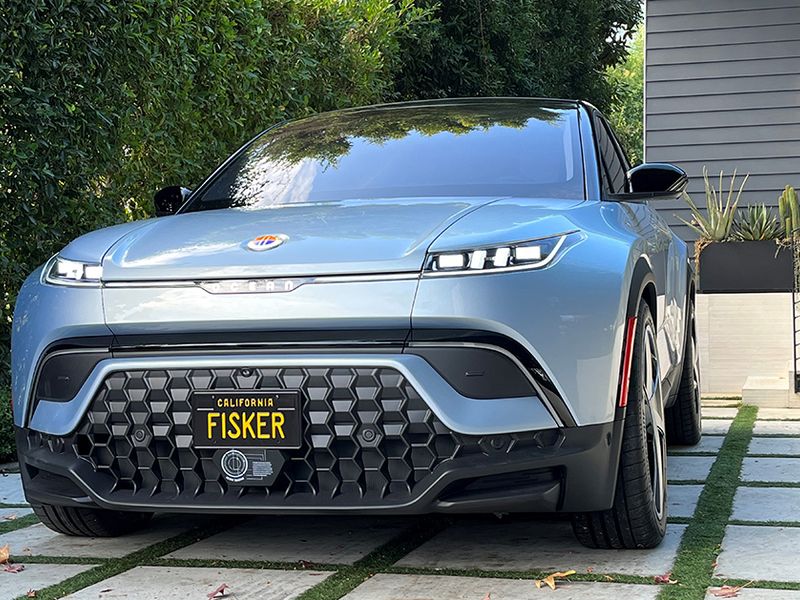
LOS ANGELES — Perhaps the most intriguing — and California-appropriate — element of the Fisker Ocean is the giant touch screen that rotates into “Hollywood mode.”
The Ocean has a 17.1-inch vertically oriented screen to handle numerous functions. But when the crossover is in park — especially for killing time during a charge — a click of a button rotates the screen to a horizontal position so passengers can watch a movie or show and maximize the screen space.
“So that’s a unique idea, a unique thing that we put into the car,” CEO Henrik Fisker said in a briefing with reporters in advance of the Los Angeles Auto Show, where the vehicle was officially unveiled and many details were revealed.
The company staged a “secret” pre-reveal at the pier at Manhattan Beach, the L.A. suburb where Fisker is based. Henrik Fisker, a famed designer for BMW and Aston Martin, said he first sketched the new company’s logo at the beach there, inspired by the sun setting on the ocean, the designer’s pencil and the engineer’s ruler.
The first 5,000 Fisker Ocean crossovers — set to begin production a year from today — will be priced at the top of the range, $68,999 before tax credits and destination fees, though base models start at $37,499. The Ocean, which seats five, will be manufactured by Magna Steyr at its carbon-neutral plant in Graz, Austria, where it also makes the BMW Z4 sports car and Mercedes-Benz G-Class SUV known as the Gelandewagen.
The startup, which is forgoing franchised dealers and company-owned stores, also is offering a flexible lease, like a subscription. The base Sport model is set to lease for $379 with a $2,999 activation fee. Lease prices on the $49,999 Ultra and top-end Extreme version — priced the same as the Fisker Ocean One launch models — will be announced later. Fisker’s subscription doesn’t include insurance, as some rivals’ plans do, but customers can end it at any time without damaging their credit history.
Founder Henrik Fisker touted the vehicle’s environmental benefits in its cabin materials, including a vegan interior that uses recycled material such as old fishing nets, T-shirts and “renewed” rubber. The Ocean has the largest solar panel on its roof of any production vehicle, Fisker said, which could provide 1,500 to 2,000 miles of cost-free, pollution-free driving per year, depending on the weather. The company is still determining with the EPA how to properly communicate that value to shoppers, he said.
To cover a broader range of customer needs — and price tolerances — Fisker contracted with CATL to use two different cell-pack chemistries. For the base Sport edition, CATL will use lithium ion phosphate chemistry, which is less energy-dense, but also less costly.
“I think right now CATL is the world leader in that technology,” Fisker said.
The higher-performance Ultra and Extreme versions will have cells with nickel manganese cobalt chemistry, which has “higher energy density, and that’s how we get the super performance of the more expensive versions.”

